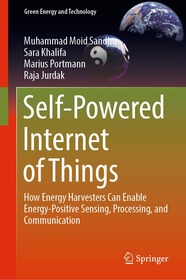
Self-Powered Internet of Things
How Energy Harvesters Can Enable Energy-Positive Sensing, Processing, and Communication
Series: Green Energy and Technology;
- Publisher's listprice EUR 160.49
-
66 563 Ft (63 393 Ft + 5% VAT)
The price is estimated because at the time of ordering we do not know what conversion rates will apply to HUF / product currency when the book arrives. In case HUF is weaker, the price increases slightly, in case HUF is stronger, the price goes lower slightly.
- Discount 20% (cc. 13 313 Ft off)
- Discounted price 53 250 Ft (50 714 Ft + 5% VAT)
Subcribe now and take benefit of a favourable price.
Subscribe
66 563 Ft

Availability
printed on demand
Why don't you give exact delivery time?
Delivery time is estimated on our previous experiences. We give estimations only, because we order from outside Hungary, and the delivery time mainly depends on how quickly the publisher supplies the book. Faster or slower deliveries both happen, but we do our best to supply as quickly as possible.
Product details:
- Edition number 2023
- Publisher Springer International Publishing
- Date of Publication 17 June 2023
- Number of Volumes 1 pieces, Book
- ISBN 9783031276842
- Binding Hardback
- No. of pages165 pages
- Size 235x155 mm
- Weight 488 g
- Language English
- Illustrations XX, 165 p. 70 illus., 69 illus. in color. Illustrations, black & white 471
Categories
Long description:
Table of Contents:
Introduction.- Background.- Energy harvesting to power the IoT devices.- Energy harvesters as activity sensors.- Energy harvesters as a simultaneous source of energy and activity information.- Energy-Positive Activity Recognition.- Fusion of multiple energy harvesters.- Conclusion and Future Work.
More



